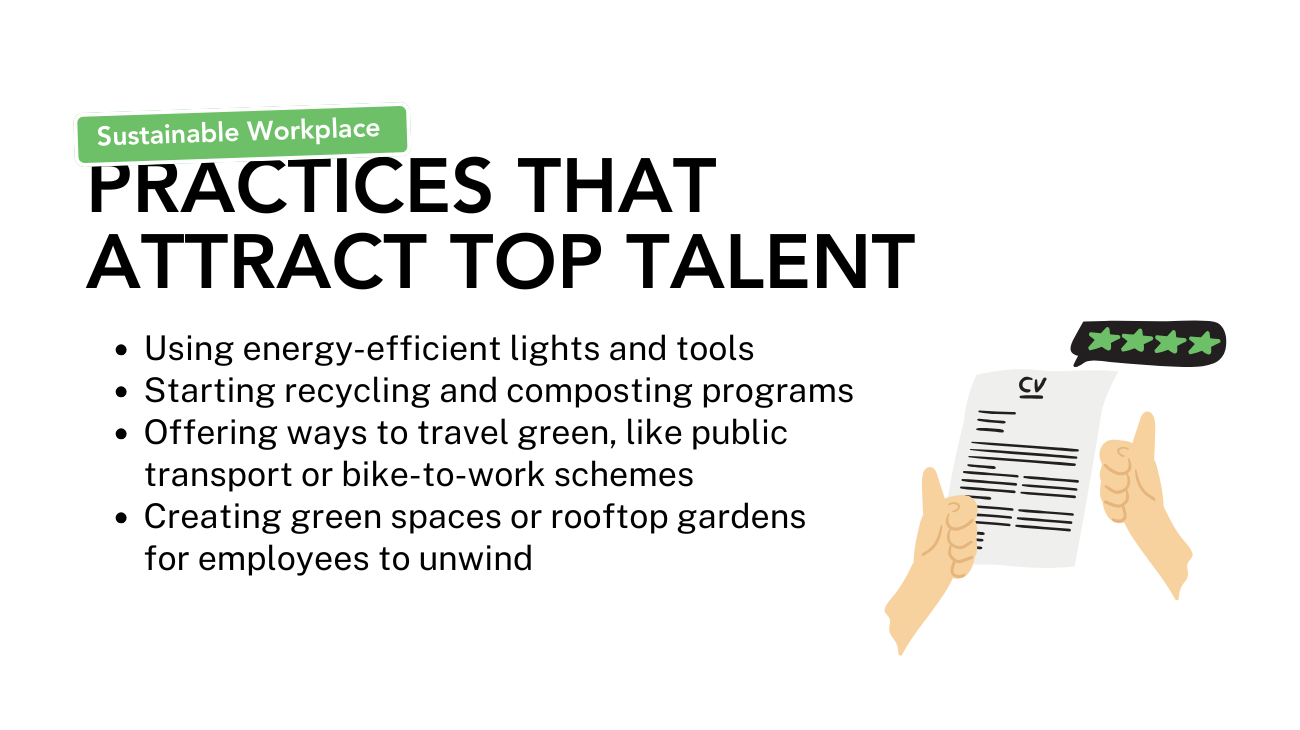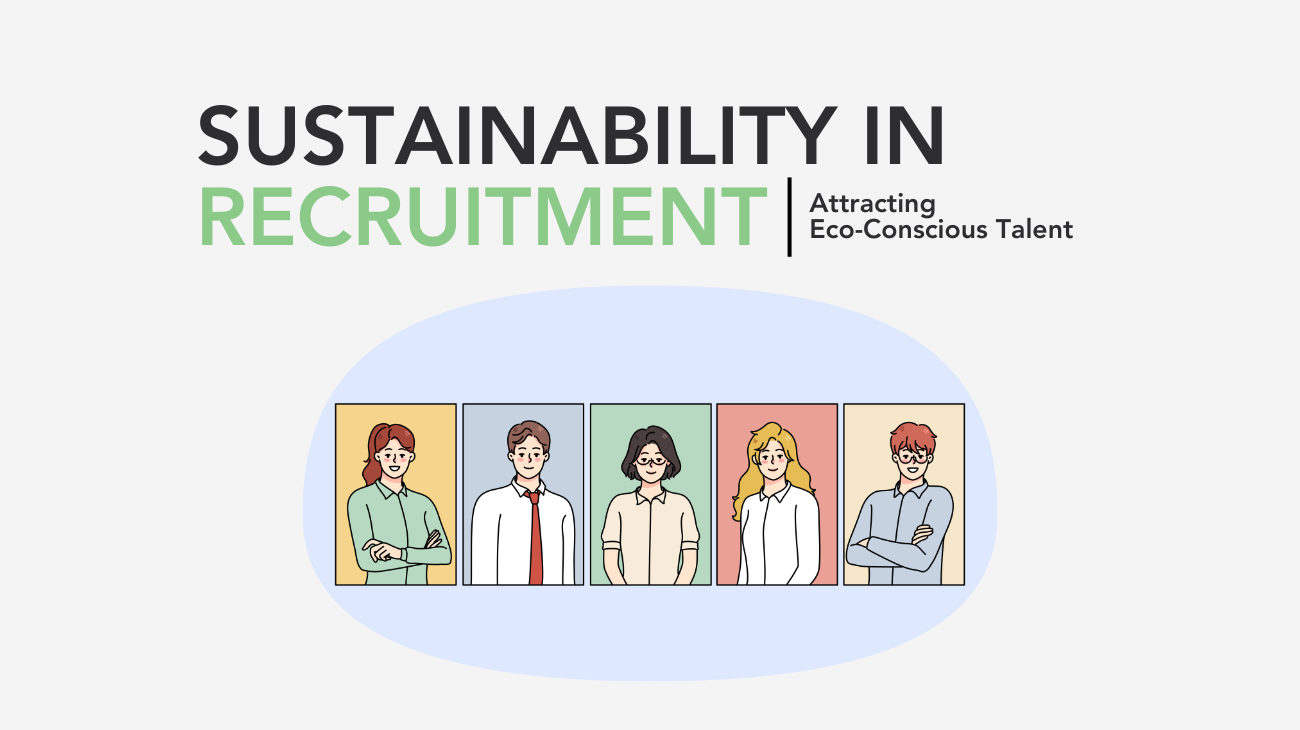Sustainability in Recruitment: Attracting Eco-Conscious Talent
Why A Sustainable Workforce Culture Is More Successful
A sustainable workforce culture is key to a successful work environment. It supports employee well-being and boosts business success. Studies show that companies focusing on sustainability do better than those that don’t. This is because a sustainable culture leads to better performance, happier employees, and less turnover. Some main advantages of a sustainable culture are:
- More engaged and productive employees
- Better brand image and customer loyalty
- Cost savings from being energy-efficient and reducing waste
- Ability to attract and keep the best talent
By embracing sustainability, businesses can positively impact the environment, their workers, and the community. This approach also leads to long-term success and profits.

Understanding the Modern Eco-Conscious Employee
The modern eco-conscious employee wants to work for a company that values sustainability. They look for a workplace that is not just efficient but also has a purpose. Companies that focus on sustainability attract and keep the best talent, boosting their values and success.
Studies show that eco-conscious employees value workplace productivity and company values a lot. They are looking for a job that helps the planet. Here are some key traits of these employees:
- They have a strong sense of purpose and want to help the planet.
- They expect companies to be green and use eco-friendly practices.
- They want companies to be open and accountable in their actions.
By understanding and supporting these traits, companies can create a better work environment. This environment supports the values of eco-conscious employees, leading to better productivity and success.
Building Environmental Values into Your Company DNA

Adding environmental values to your company’s culture is key for workplace sustainability and employee engagement. Start by creating a green mission statement. This statement shows your company’s dedication to the environment. It guides decisions and shapes policies.
To make a green mission statement, look at your environmental footprint and how you support sustainability. Check your current practices and find ways to improve. This way, your mission statement will be both meaningful and reachable.
Key Elements of a Green Mission Statement
- Clearly defines the company’s commitment to sustainability
- Outlines specific goals and objectives for reducing environmental impact
- Encourages employee participation and engagement in sustainability initiatives
Setting up environmental management systems is also vital for workplace sustainability. These systems help manage environmental effects and ensure sustainability in all business areas. With a green mission statement and effective systems, your company can build a sustainable culture and engage employees.
Sustainable Workplace Practices That Attract Top Talent

Creating a sustainable workforce culture is key to attracting top talent today. A successful work environment that values sustainability drives growth and boosts employee happiness. It also improves a company’s reputation. By focusing on energy efficiency, waste reduction, and green transport, companies show they care about the planet and society.
Some important sustainable practices include:
- Using energy-efficient lights and tools
- Starting recycling and composting programs
- Offering ways to travel green, like public transport or bike-to-work schemes
- Creating green spaces or rooftop gardens for employees to unwind
These actions help build a sustainable culture and a great work environment. They support employee health and productivity. By focusing on sustainability, companies can draw in eco-aware talent and lead their field.
Studies show that people want to work for companies that care about the planet and society. By adopting sustainable practices, companies show they’re making a positive difference. This approach not only benefits the environment but also boosts business success.
Creating a Green Office Environment

Companies can boost productivity and uphold values by going green. They can do this by using eco-friendly designs, cutting down on waste, and choosing energy-saving systems.
Sustainable Design Elements
Key green design features include natural light, less paper, and smart lighting. These can make your office both green and productive.
Waste Reduction Programs
Setting up waste-cutting programs helps a lot. This means recycling, composting, and using less paper. It shows your company cares about the planet and supports a green workplace.
Energy Efficiency Initiatives
Energy-saving steps help lower office energy use. This includes using green lights and turning off unused items. It’s good for the planet and boosts work efficiency.
Here are some ways to save energy:
- LED lighting
- Motion sensors for lights
- Power strips for electronics
Employee Engagement Through Environmental Initiatives
Getting employees involved is key to making environmental efforts work. By asking for their input, companies can make their workplaces greener and succeed. Studies show that when employees are engaged, they’re happier and less likely to leave.
There are many ways to get employees on board. For instance, starting a recycling program and rewarding those who help. This not only cuts down on waste but also builds a sense of unity among staff.
Here are some ideas to boost employee involvement in green projects:
- Keep them updated on how they’re helping the planet
- Let them help decide on green projects
- Teach them about sustainability
- Thank them for their green efforts
When employees are part of green projects, companies look better and help the planet. As more companies focus on being green, getting employees involved will become even more important.

Measuring and Reporting Sustainability Success
To see if environmental efforts are working, companies need to measure and report their success. This helps spot where they can get better and shows they care about a sustainable workforce culture. It’s key to why a sustainable workforce culture does well.
Tracking important signs like energy use and waste helps businesses see how their green efforts are doing.
When checking on sustainability success, consider these things:
- Tools for checking how green you are
- Standards for clear and honest reports
- Regular checks to find and fix problems
By doing these things, companies can succeed in business and support a sustainable workforce culture. This leads to happier employees, lower costs, and a better reputation. It shows why a sustainable workforce culture is more successful.
As companies focus more on being green, they’ll attract the best workers, cut down on harm to the environment, and do well in a market that cares about the planet.
Developing Green Leadership Programs
Creating a great work environment is key for business success. Green leadership programs are a powerful tool. They promote sustainability and environmental responsibility, boosting employee engagement and retention.
Studies show green leadership programs improve well-being and the work environment. They give employees the tools to make eco-friendly choices. This leads to a culture of caring for the planet.
- Environmental training and development programs
- Eco-friendly challenges and competitions
- Employee-led sustainability projects
Investing in green leadership programs is smart. It makes the workplace better for everyone and helps the planet. As companies focus more on being green, these programs will become even more vital for lasting success.
Benefits of Green Leadership Programs | Impact on Employee Well-being | Impact on the Work Environment |
Increased employee engagement | Improved job satisfaction | Reduced environmental footprint |
Improved employee retention | Increased productivity | Cost savings through sustainable practices |
Marketing Your Green Employer Brand
Marketing a green employer brand is key to attracting and keeping the best talent. By showing off eco-friendly practices and values, companies can boost their reputation. This leads to better workplace productivity as employees feel more motivated and connected to the company’s mission.
There are many ways to promote a green employer brand. You can use social media, job ads, and company websites. By focusing on company values like sustainability, companies can stand out and draw in people who care about the environment. Here are some strategies:
- Share stories of green initiatives and successes on social media
- Emphasize eco-friendly practices in job ads and company descriptions
- Create a special page on your website for sustainability and environmental efforts
By marketing a green employer brand well, companies can see better workplace productivity, support their company values, and attract the best talent. This can lead to more success and a strong reputation in the industry.
Conclusion: Building a Future-Ready Sustainable Organization
To build a future-ready sustainable organization, you must commit to a workplace culture that values the environment. A sustainable workforce culture boosts long-term growth, employee happiness, and a company’s reputation. By using green practices, like energy saving and waste reduction, you create a better work place. This attracts eco-conscious talent and supports employee health.
Putting sustainability first helps the planet and your business. Companies that focus on sustainability are ready for changing environmental rules and consumer needs. They attract the best talent. By valuing a sustainable workforce culture, you drive innovation and stay ahead in your field.

